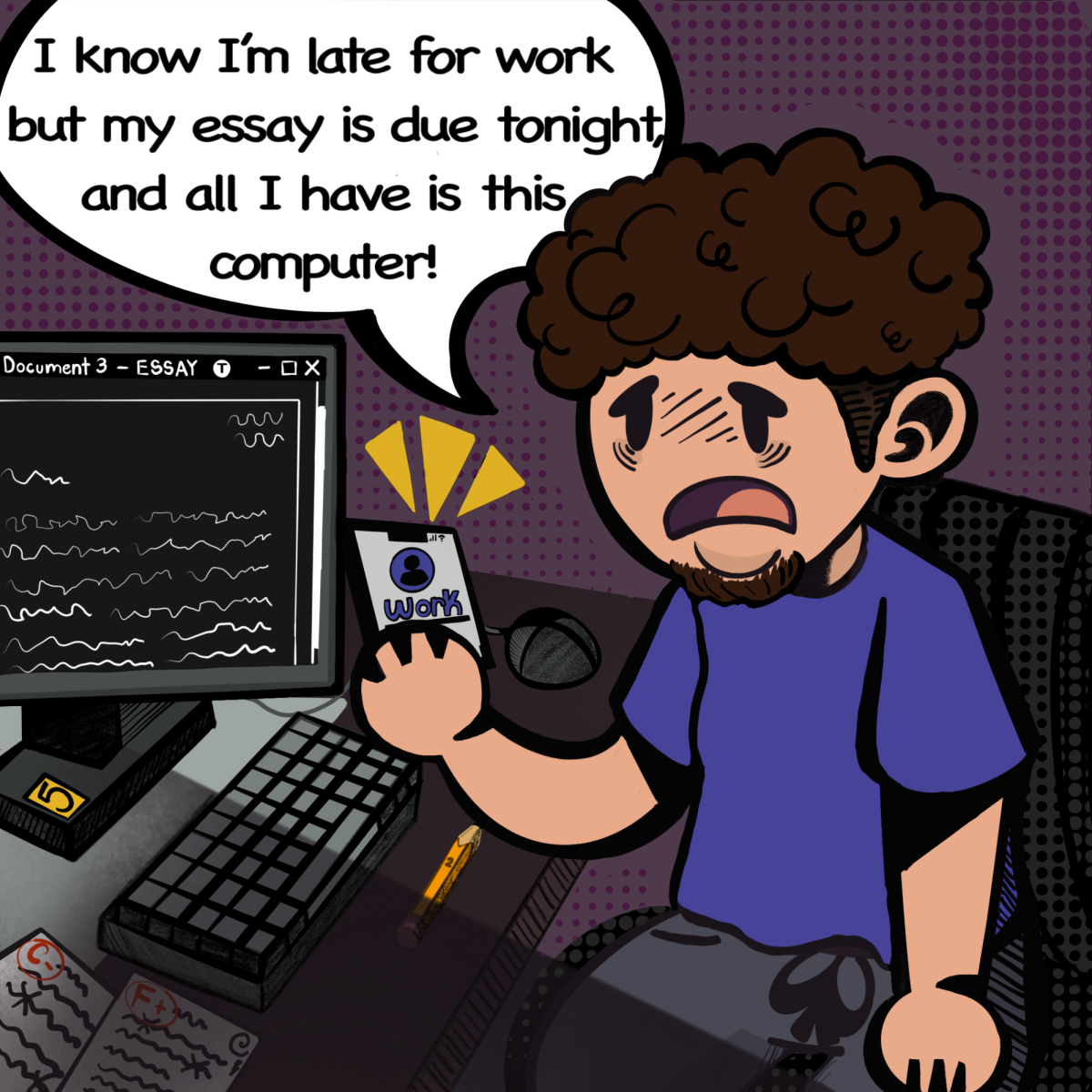By Eloy Duran/reporter
Graphic arts are more than just entertainment. They are visual expressions of human rights, according to SE English instructor Arlandis Jones.
Jones noted that the word graphic derives from a German word that originated from Greek meaning “for drawn” during a presentation to SE Campus students March 22.
In 1731, William Hogarth published drawings showing conditions with moral intent. It gave compassion to prostitutes living at that time. Jones referenced cartoons, magazines and comics in the more recent past and the messages they conveyed. In particular, the Bugs Bunny cartoons taught how violence resolved conflict.
Comics were more into finding laughter from violence in the past than having a meaningful discussion to solve conflicts, Jones said. He found interest in decrypting these images from old newspapers, which led him to focusing on human rights and graphic arts, he said.
“You can look at these different graphics that are in the middle of news stories that will have some message of human dignity,” he said.
SE library services assistant director Tracey Minzenmayer said she found the presentation informational.
“I thought this was a great overview of a subject many people may be surprised to find is so complex once they start studying it,” she said.
Jones also spoke about how these messages weren’t stated outright but were presented as coded messages in the past. This indicates how, in graphics, the reader interprets the message.
For instance, a picture can be shown to anyone, but sometimes that picture is more meaningful and needs to be studied to understand why it’s so important to be featured in the newspaper.
Visual media often affects the people watching. Superheroes in today’s shows are stories about trying to save humanity. This shows how to be human and how to value everyone’s rights, Jones said.
Asked if human rights in graphic arts are still useful in the modern era, Jones said he believes they are.
“Not the same messaging as the Universal Declaration of Human Rights, more its morality and sensibility,” he said. “For children, I think our heroes are taking over that message on how we should be treating each other.’’






























